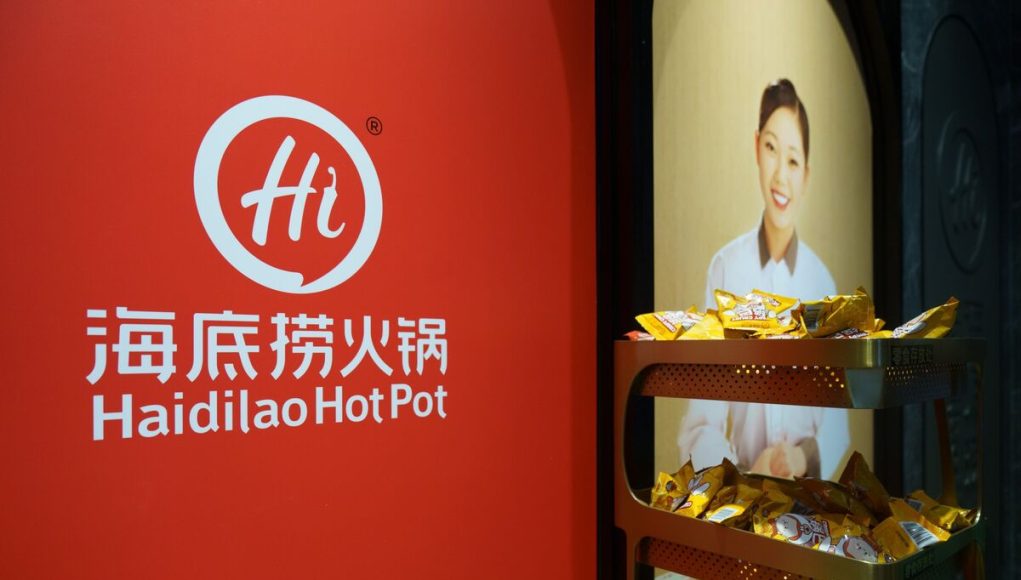(SINGAPORE, 11.09.2025) When Haidilao, China’s leading hotpot restaurant chain, continuously experienced triple hit in its core hotpot business — declining revenue, lower spending per customer, and falling table turnover — in its home country, it has to step up diversification of its food and business formats, lately by expanding its delivery component, which has since surged nearly 60% and whose contribution to its revenue has risen to 4.5%, Chinese media reported.
Recognized for its efficient supply chain, unique service model emphasizing customer engagement, and notable accomplishments, Haidilao is now closely watched for how it could keep itself viable and even thrive in China’s current restaurant scene where the market is oversaturated, consumers generally under-spend, and demand is rapidly fragmenting with trends changing fast, reported the news website 36 kr.
Late last year, Haidilao introduced the Red Pomegranate plan, a strategic initiative designed to diversify the company’s restaurant portfolio and drive internal innovations. Under this plan, Haidilao developed multiple sub-brands and embraced a flexible approach to restaurant management.
In the first half of this year, income from its so-called “alternative restaurant operations” surged to 597 million yuan (about S$108 million), representing a 227% year-on-year increase. This strong growth highlights the plan’s effectiveness in extending Haidilao’s business beyond its core hotpot offerings.
This year, Haidilao has pursued a three-pronged approach. First, it has overhauled its core restaurants with new concepts, giving them the décor of nightclubs, adding AI experiences, providing freshly cut meats, and setting aside family-friendly areas.
Second, it promotes low-priced offerings like breakfast, worker set meals, and delivery services. Third, it has rapidly launched “sub-brands” such as barbecue and spicy hot pot. The company aims to seize every opportunity in the dining industry.
However, the report remarked, Haidilao still seems some way from “seizing the trend of the times.” Its core hotpot dining business has hit a bottleneck while attempts to market value-for-money offerings and trendy dining concepts are far from enough to boost growth.
In the first half of this year, Haidilao posted revenue of 20.7 billion yuan, down 3.7% year-on-year, while core operating profit fell 14% to 2.4 billion yuan. The table turnover rate dropped from 4.2 last year to 3.8, dragging same-store sales down by 10% year-on-year. Although the average customer’s spending edged up slightly to 97.9 yuan, it merely returned to the level seen in 2017.

While Haidilao can maintain stable profits and its survival is not in question, whether it can successfully evolve into a diversified restaurant group—or end up like Japanese chains, large but barely profitable—will depend on its efforts and the broader market environment, the report noted.
Boosting its core business has become extremely difficult for Haidilao. After reaching 1,579 stores during the pandemic, Haidilao hit a growth ceiling. It then closed several hundred underperforming locations and decided it would not pursue further expansion unless its table turnover rate rose back to 4.
As of the latest count, Haidilao has 1,363 locations, down 5 from the same period last year.
Meanwhile, it opened stores in many cities that cater to solo diners, with average spending per customer expected to be between 20 and 40 yuan — cheaper than the cost of a single Haidilao hotpot base.
Some locations already sell over 3,000 orders per month. However, the overall taste can only be considered average, commented the report.
A 2025 report by investment consulting company Shangqi indicates that Chinese consumers now prioritize price when choosing a hotpot restaurant, with brand and reputation coming second.
Haidilao management has also noticed a trend: “Per capita spending on main meals and hotpot has declined, and consumers are making more rational choices; online sales growth is outpacing offline.”
In the past two years, many dine-in restaurants with average orders of 100 to 200 yuan have introduced takeaway sets designed for solo diners, including Longrenju and Yunhaiyao. Another group of restaurants quickly opened “satellite stores” dedicated to delivery, such as Laoxiangji, and Donglaishun.
Haidilao is a latecomer to the delivery fray. But by mid-2025, it had upgraded delivery capabilities in over half of its stores. The company plans to develop “super kitchens” specialized in delivery and experiment with the model of satellite stores.
According to its earnings call, management considers delivery core strategic business and expects its growth to accelerate further in the second half of the year and beyond.
Haidilao’s growth model has previously relied on highly standardized dishes and a “mentor-apprentice” system where store managers train future managers, thereby allowing continuous expansion.
From 2017 to 2021 before expansion paused, Haidilao’s store count grew by an average of 65% a year, and employees could typically be promoted from server to store manager in just four years.
While expansion plan has ceased, interestingly, under the Red Pomegranate Plan, Haidilao has dramatically lowered barriers to entrepreneurship, opening new advancement opportunities for both employees and external candidates.
Once a project is approved, the founder receives equity and profit-sharing incentives. After three months, if a project remains unprofitable, the founding team and Haidilao share losses according to their equity stakes.
Yang Hua, the previous head coach of Haidilao’s Entrepreneurship Committee, explained: “Our goal is to create a system where even an ordinary server can plan their career at Haidilao— when to become a store manager, a regional manager, or even eventually a CEO. Preserving this core value is a key purpose of the Red Pomegranate Plan.”
Previously, entrepreneurial opportunities at Haidilao were limited to senior executives, and most projects lost momentum after a strong start. Now, a more inclusive system allows the company to seize a broader range of possibilities.
Among the derived entrepreneurial brands, the largest today is Yanqing BBQ, which operated 70 outlets by the end of June and raked in nearly 200 million yuan in the first half of the year.
The brand now aspires to open 400 to 500 stores within three years, aiming to become a “mini Haidilao.” Its founder is none other than Yang Hua herself.
Building a multi-brand portfolio is nearly a standard approach for US and Japanese restaurant groups. But the Chinese dining market is facing far more complex challenges: supply exceeds demand, average consumer spending is declining, and consumer preferences are splintering and shifting at an increasingly rapid pace.
Haidilao’s endeavours to remain viable reflects the contention with these challenges. It serves as a good case study in how a mature Chinese restaurant group adapts to a saturated and quickly evolving market, said the report.
Last month, Haidilao closed its flagship Clarke Quay outlet in Singapore, the chain’s first international branch outside China in 2012, after its lease expired.
Looking ahead, Haidilao remains committed to the Singapore market, with plans to open two new outlets, which will bring its total number of stores in the city to 19.





































